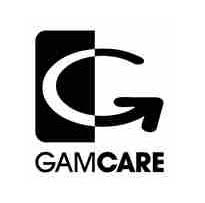Playing profitably when the board pairs in Pot-Limit Omaha is not necessarily difficult, especially in the lower limit games. Yet you will see significant and costly mistakes made by your opponents in exactly this situation. This article outlines the basics of playing when the board pairs in Pot-Limit Omaha to ensure that you are the one winning the big pots rather than losing them!
We start by outlining the ‘golden rule’ when facing a paired board on the flop or turn in Omaha Poker. Next we look at how position, the number of opponents and their tendencies in the hand affect your play. An effective betting strategy which works whether or not the board helped your hand is discussed next. Finally we look at what happens when a 3rd card makes trips available on board.
When the board pairs in Pot-Limit Omaha a simple but effective rule is to immediately stop chasing draws to straights and flushes. This is not to say that you will never win with these hands, or that aggression is necessarily a bad thing with a draw as backup – the key point is this:
With a straight or flush on a paired board you are likely to either win a small pot or lose a very big one!
Looking at things from another perspective we need to note that with 6 possible combinations of 2 cards in each of the Omaha Staring Hands held by each opponent the chances that someone already flopped a full house is high, and even if nobody hit full there may be 2 opponents holding the trip card – with up to 18 outs between them to fill up on each of the turn and river. There will often be times when the very card which makes a straight or flush for one player completes a full house for another, often costing the player who made the flush their entire stack.
If you missed the flop but find yourself in position against a single opponent (or maximum 2) it is important to remember that the board will look very threatening to players who missed it. A bet will often win immediately in this situation, though you should generally stop betting if called. When the betting gets heavy you will need to make an assessment of your hand along with the opposition – would this player bet with bare trips in this situation? Would they check with the intention of check-raising with a super-strong hand or lead out to build a pot? Would this opponent call my bet with only an over-pair?
Sometimes you will hit a monster hand, and other times the paired board will miss you completely. Betting the pot regardless will cost you money those times you chase out opponents when strong, and will also be expensive when you have to fold to a big re-raise. Checking to induce a bluff might work, but calling when you have missed the board could be expensive those times your opponent ‘has it’ – and you will miss value those times you are strong.
Instead we recommend a half to 2/3rds pot bet on a paired board. This has the dual advantage of being large enough to fold out opponents when you missed, and yet significant enough to build a pot when you have hit the board – allowing those unwitting opponents to chase (and then go broke) with a straight or flush.
Those infrequent times when a 3rd card makes trips visible on board you need to adjust yet again. Now anyone holding a pair in their hand made a full house, and there is always a possibility that someone has just hit quads. Even the nut full house is now in a position to win a small pot of lose a big one. Playing a strong pair positively will often be profitable, especially against inexperienced opponents – however if you get into a raising war those chips are significantly less likely to be coming your way.
To summarize, the beginner pot-limit Omaha strategy mistake on paired boards is to continue chasing flush or straights when the betting gets heavy. Omaha starting hand combinations often mean that a full house – or draw to one with trips – is out there against you. Betting half the pot when the board pairs helps to make money when you are strong and can be just as effective (and cheaper!) than a full pot bet when you are taking a stab at the pot from position.




